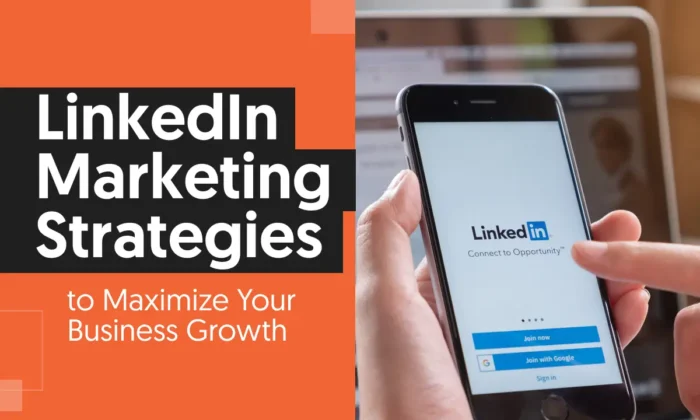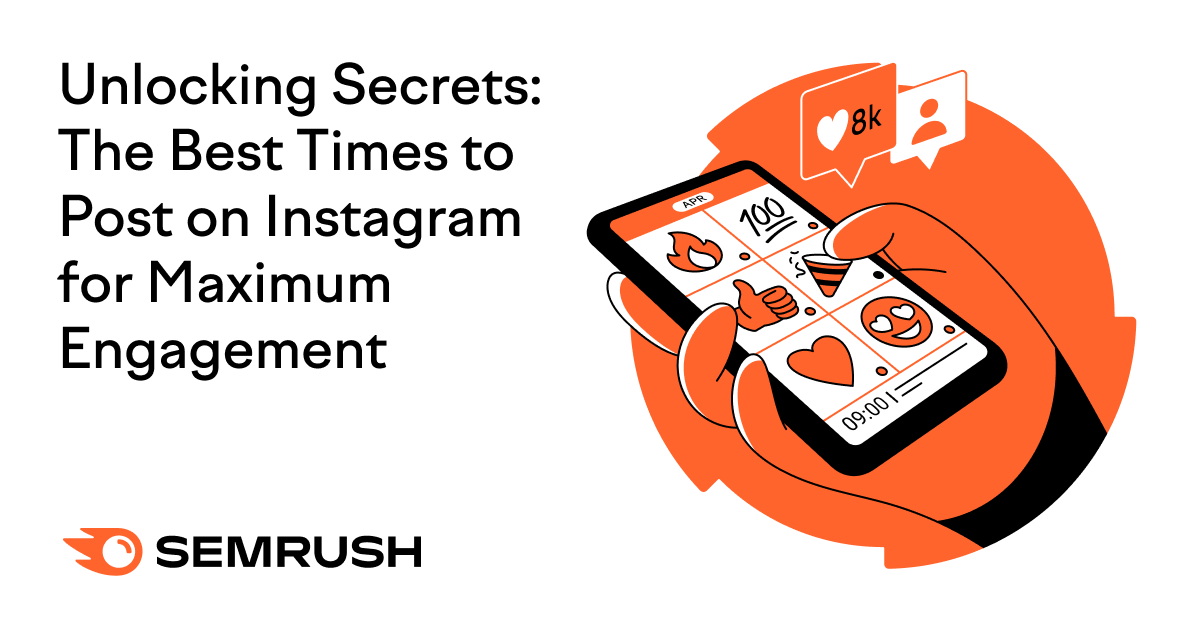HARO Link Building: How to Get Backlinks with HARO
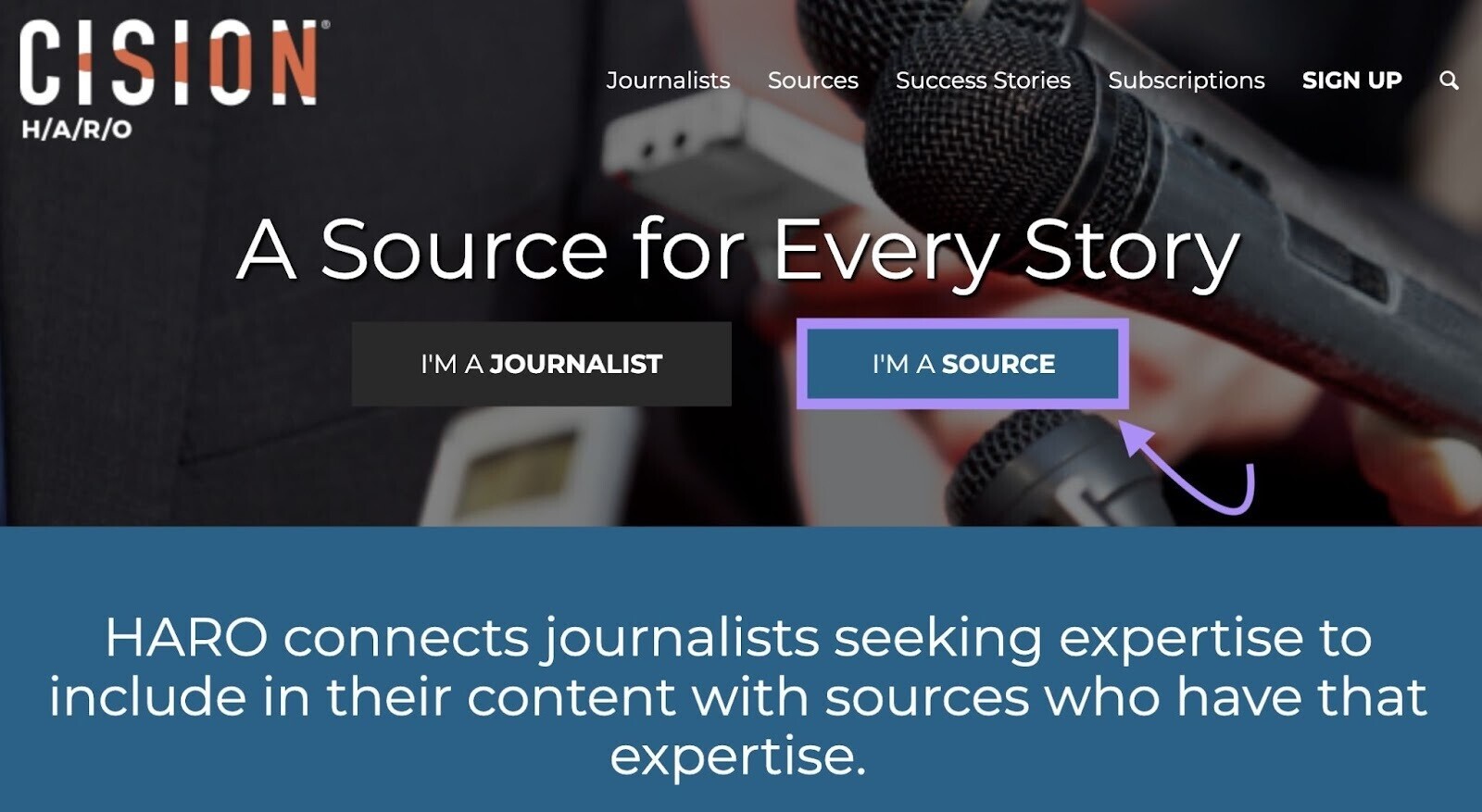
In recent years, HARO link building has become one of the most loved link building strategies among SEO professionals.
Why?
Because with HARO, you can land high-quality links on some of the world’s best-known publications.
Forbes, The New York Times, The Wall Street Journal, and Mashable are just a few news sites you can acquire links from with HARO.
In this article, we will give you actionable advice on how to use HARO for link building with some top tried-and-tested tips for success.
What Is HARO?
Help a Reporter Out (HARO) is a platform that connects journalists with sources who can give expert insights on relevant industry topics.
It allows entrepreneurs and business owners to gain exposure and establish themselves as thought leaders in their industry. Without spending thousands on a PR agency.

So, how does HARO work exactly?
Journalists post requests for information from sources to include in an upcoming article.
You can register as a source to gain access to HARO requests and pitch your responses. If your response is up to scratch and covers what the journalist wants, your quote will be featured in their article.
Along with your expert opinion, a journalist will usually also provide a link to your website, citing you as the source.
HARO works in two main ways:
First, you can opt for the traditional method. You will receive three HARO emails daily—around 5:35 a.m., 12:35 p.m., and 5:35 p.m. ET from Monday to Friday.
Second, you can use HARO’s new pitching platform, Connectively. This allows you to see journalist requests as they go live. Plus, you can filter opportunities and track your pitches within the platform.
What Is HARO Link Building?
HARO was designed as a journalism and public relations tool (with the key benefits of building brand awareness and promoting thought leadership). But many marketing professionals quickly realized the potential to use HARO to acquire high-authority backlinks.
That explains the recent explosion of HARO link building agencies offering done-for-you HARO link building services.
Moreover, many SEO agencies now include the HARO link building method in their standard link building campaigns. Alongside techniques like guest posting.
A HARO link service (or HARO SEO service, as it is sometimes referred to) works by having a professional ghostwriter craft pitches and reach out to major publications on your behalf.
Meaning?
You can earn HARO links without putting in the time and effort yourself.
There are pros and cons to using a HARO link building agency.
Although it can be great for anyone running a busy business who doesn’t have time to pitch HARO themselves, it can be very costly.
Usually, these services are priced by the link. Prices range widely, but the typical range is somewhere from $300-$750 per link.
Also, HARO link services do everything for you, including pitching on your behalf. With this, you risk a less experienced writer making comments you may not agree with and having quotes you are not happy with published under your name.
Why Would I Want to Secure HARO Backlinks for My Website?
Asides from the obvious reason that you can acquire links from top-tier, super-authoritative websites, there are many benefits to using HARO as a link building technique:
- Acquire links your competitors can’t easily replicate (they may use HARO, but they can’t guarantee to land the same opportunities)
- Build Experience, Expertise, Authoritativeness, and Trustworthiness (E-E-A-T) by being cited as an expert on authoritative websites
- Land high-quality backlinks that actually get referral traffic
- Build brand awareness
- Be seen as a thought leader in your industry
However, there are some downsides to using HARO.
Because it’s the most well-known platform of its kind, it is highly saturated with people looking to land links.
Which means?
It’s highly competitive.
Plus, anyone can sign up for free. None of the accounts are vetted. That means it’s highly possible that many of the people you are competing against may not even be real.
Journalists are bombarded with hundreds of pitches for each query. Often—especially when working under a tight deadline—a journalist will use the first suitable pitch they come across.
Meaning?
Your pitches may not even get looked at if you’re not quick to respond.
The good news:
We’ll give you some tried-and-tested pitching advice to help you stand out from the crowd and land killer links.
4 Easy Steps to Efficiently Build Backlinks with HARO
Now that we’ve covered what HARO is and how HARO backlinks can benefit your website, we will give you a step-by-step guide on how to get the most out of HARO.
1. Create Your HARO Account via Connectively
We recommend using HARO’s new pitching platform, Connectively.
Not only does this allow you to manage everything in one place, but you can see new opportunities as they go live and apply search filters to find relevant link opportunities better.
This makes HARO link building much easier than scanning through long emails looking for the ideal opportunity.
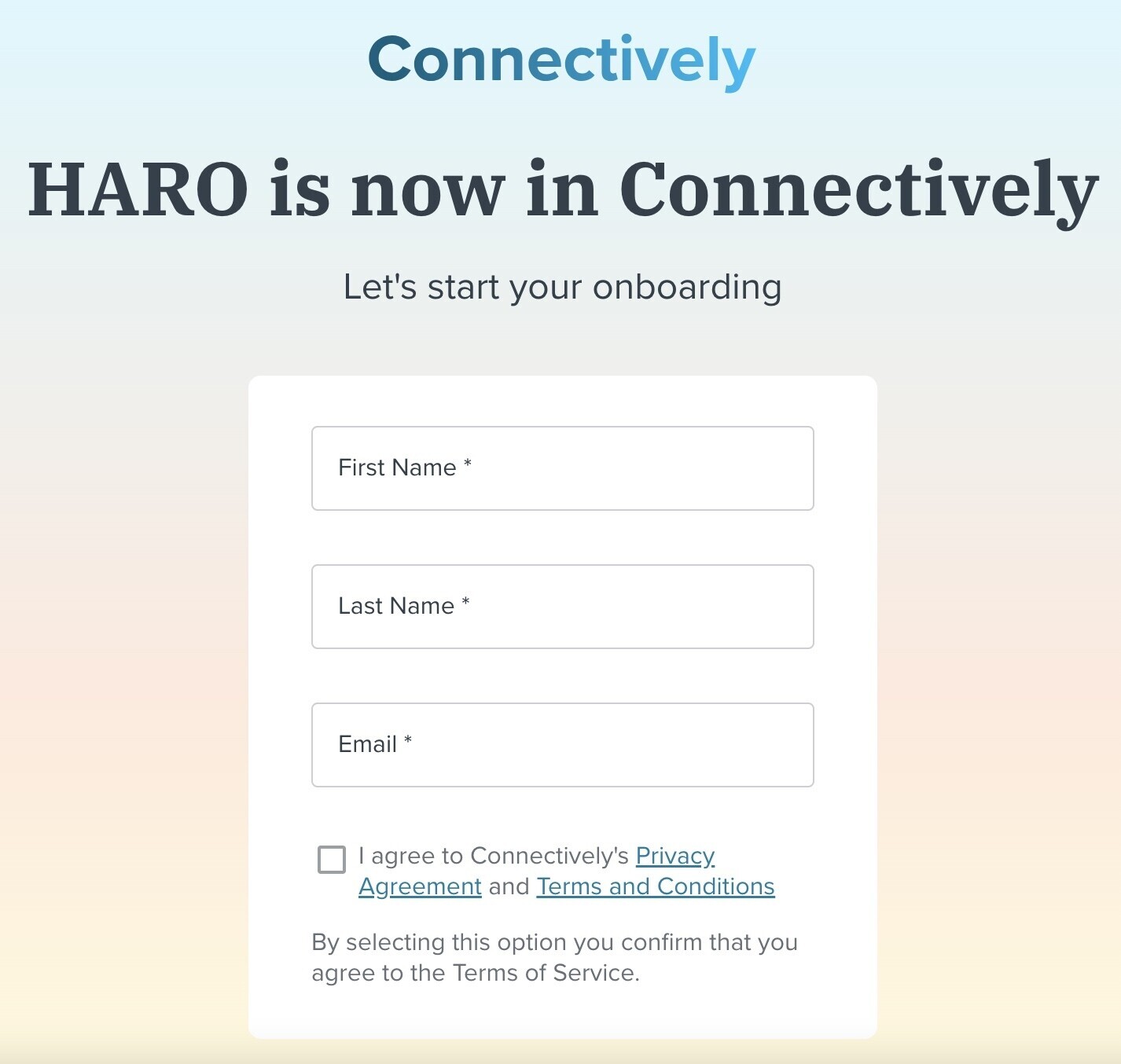
You can sign up for a free account and follow the simple onboarding steps to complete your profile and select the keywords you are most interested in.
Once you’ve completed the onboarding steps, you will be taken to the main dashboard.
Take some time to put together your profile with a focus on creating a well-written bio.
Keep your bio concise, highlighting skills and qualifications that let journalists know why you are an expert. This shows journalists that your opinions and insights will add value to their article.
2. Seek Relevant HARO Queries
Selecting the right queries is one of the most important ways to ensure success when using HARO.
If you continuously answer queries that you don’t have the necessary experience with, journalists may see you as a time-waster.
Remember:
Journalists get thousands of responses to each query. The last thing they want is to waste time reading subpar advice from someone not qualified to speak on the topic.
If you’re unsure of which pitch topics might be related to your industry, use Semrush’s Topic Research tool.
Start by entering your main business category. For example, digital marketing. Then hit “Get content ideas.”
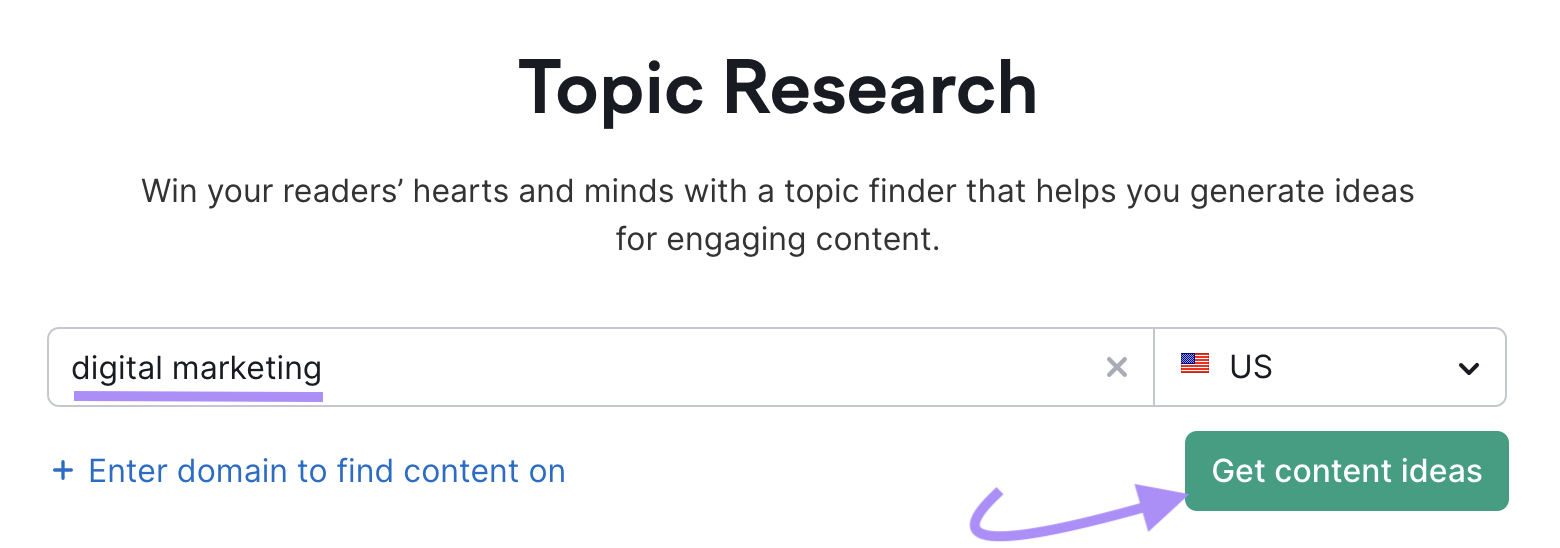
The tool will then bring up relevant topics you can share your expertise on.
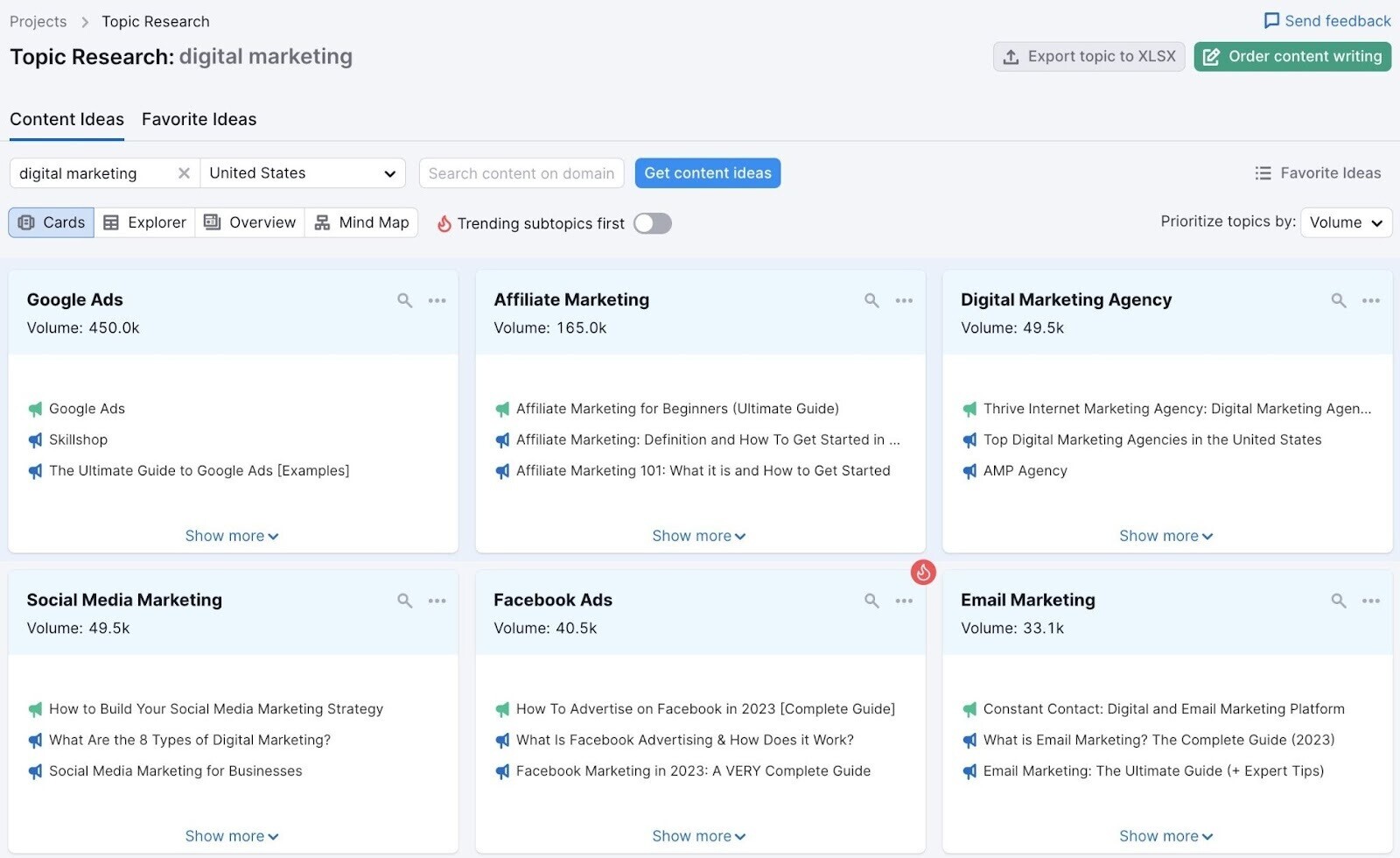
From here, head over to the Connectively app and search for these topics.
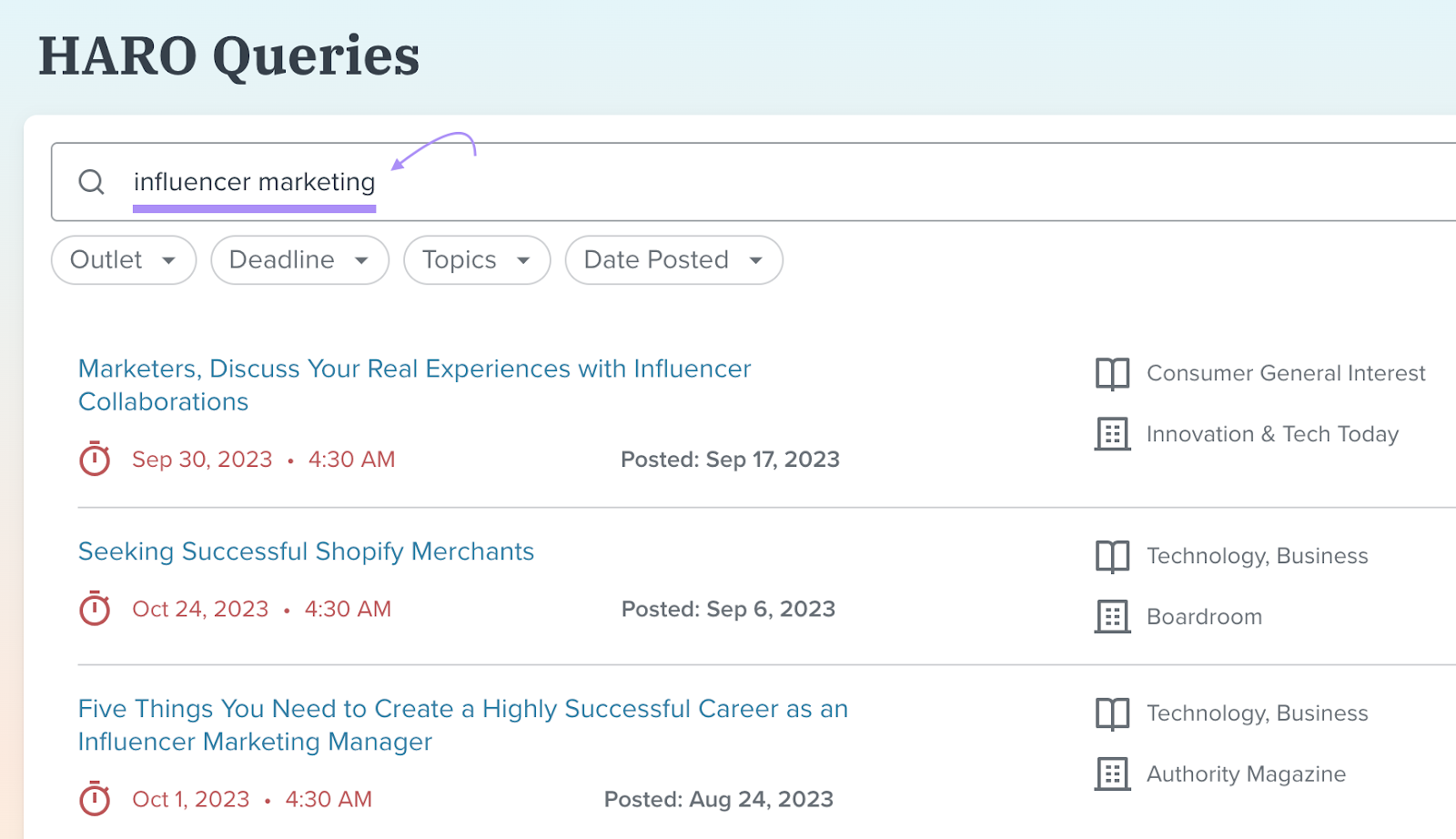
The Connectively app will then bring up all of the queries that match your search.
Pro tip: Filter queries by “**** Posted” to get the most up-to-**** opportunities. Responding to queries quickly can mean yours is the first pitch to land in a journalist’s inbox and may get selected over the competition.
If you think a query looks like something you want to pitch, simply click on the title to show the full details.
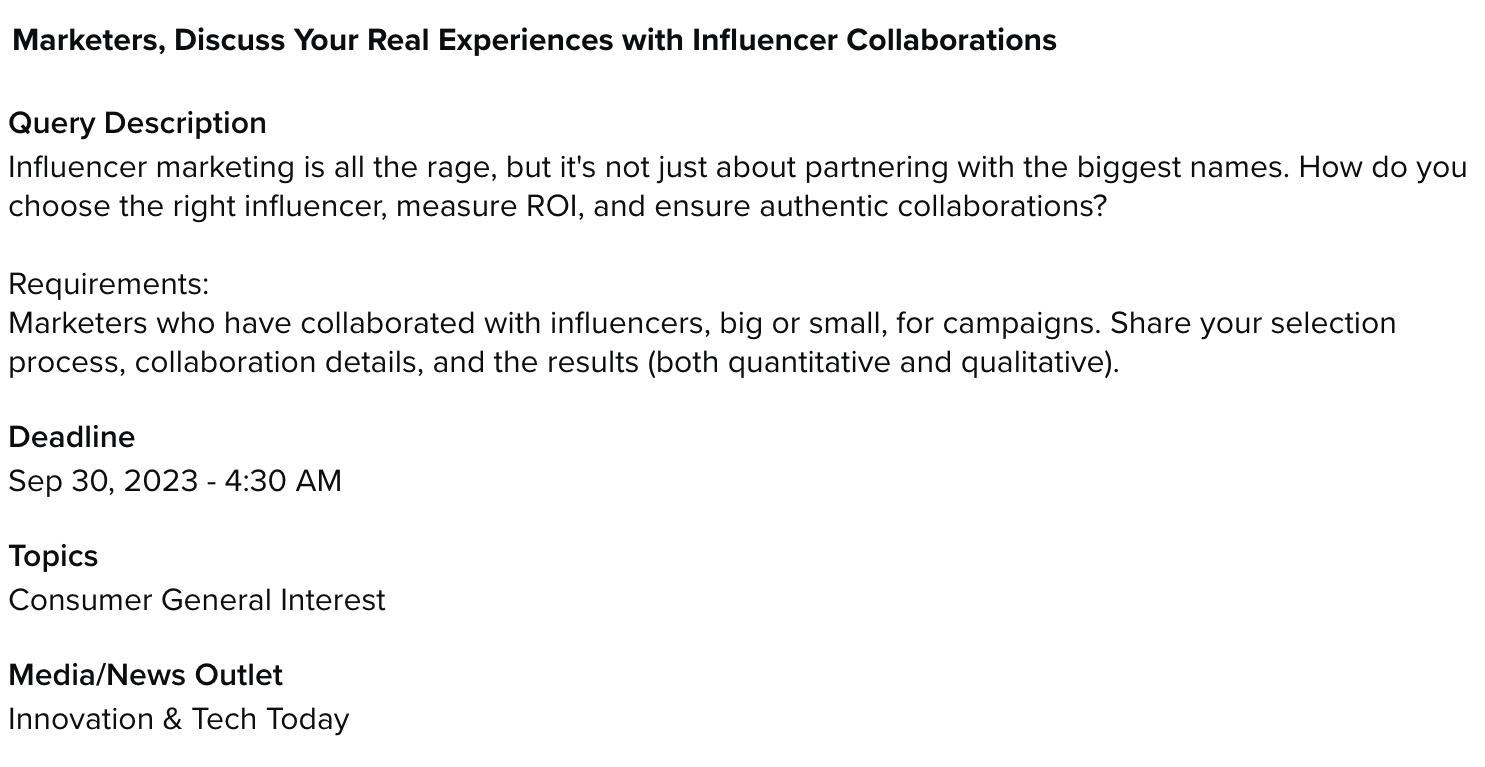
The query will usually detail the website the article is going to be published on. Use Semrush’s Domain Overview to check out the quality and potential SEO value of the website.

First, look at how much organic traffic the site has. Acquiring links from sites with little to no traffic may not help you much. Plus, you are unlikely to get any referral traffic from those links.
Ideally, look for sites with a minimum of 1K traffic per month.
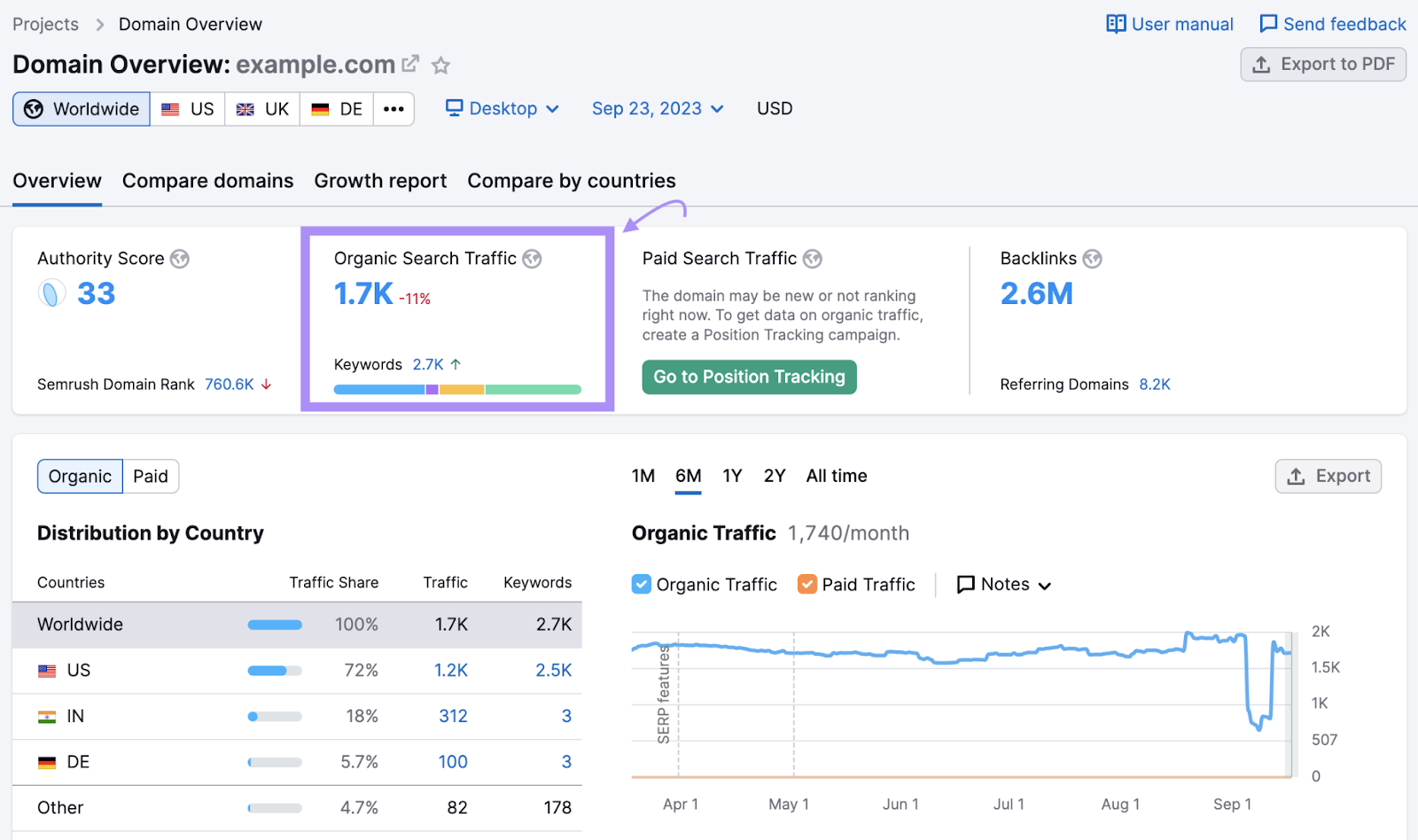
Secondly, look at the website’s Authority Score. This is a good indicator of the quality of the site. Obviously, you want to aim for a site with as high an Authority Score as possible, but aiming for a minimum of 30 is a good place to start.

Acquiring links from highly authoritative sites helps both readers and search engines see you and your site as an authority on the topic.
Note: Consider avoiding anonymous requests that don’t list the website they will be published on. These are much harder to track and are more likely to be on low-quality sites.
3. Craft a Compelling Pitch
Although choosing the right opportunities is incredibly important, your pitch will make or break your HARO link building success.
You can send pitches directly in Connectively by hitting “Pitch” on any relevant query you want to respond to.
This will open the pitching tool.
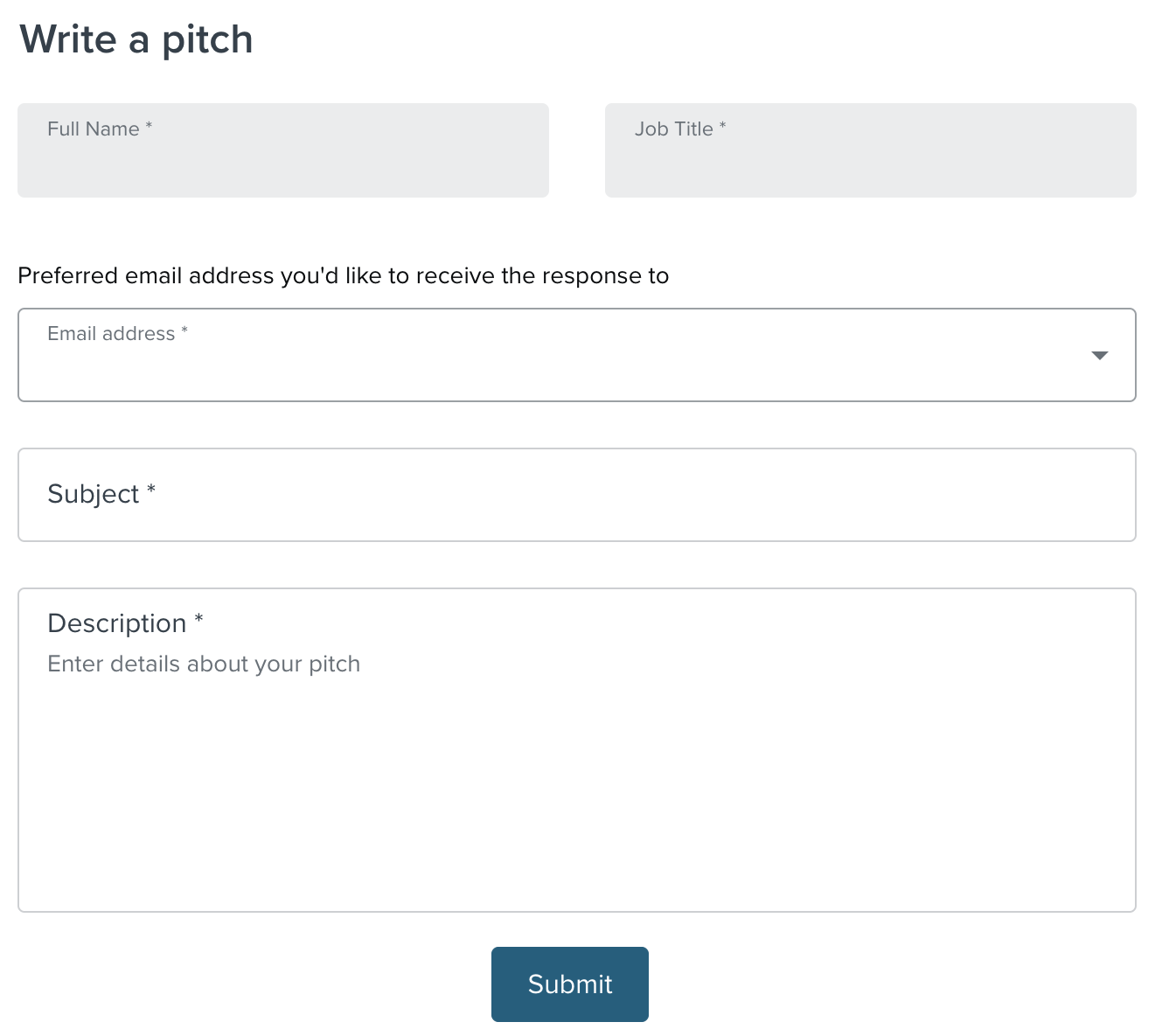
Crafting the perfect pitch that stands out when it hits a journalist’s inbox is key to ensuring your pitch is read.
This is where crafting the perfect subject line comes in.
Subject lines should be short. Ideally, yours should be around 70 characters to ensure the whole thing can be read in an inbox.
You should try to include:
- The title of the query
- Your name and job title
- Something to make you shine (if there’s room)
The first two are no-brainers. This lets the journalist know which query you are responding to (they could have multiple queries on HARO at one time) and what qualifies you to answer it.
The last one will depend on how much space you have left. But something that makes you stand out from the crowd, such as ”Award Winner” or “Leader in HRTech,” can show the journalist that you are the best person to share your expertise.
Here’s an example:
RE: SEO Tips For 2023 – Jenny Abouobaia – Award-Winning SEO Consultant
Then, we get onto the body of the pitch itself.
Assuming your subject line has piqued the journalist’s interest enough to open your pitch, the last thing you want to do is bore them immediately.
Here are some best practices to follow when crafting your pitch:
- Make sure it’s clear and concise. Sum up why you are relevant to the query in the first paragraph, and don’t be afraid to sell yourself.
- Get to the point straight away. And make your main quote easy for the journalist to simply copy and paste into their article.
- Offer facts and figures where possible rather than “most” or “a few.” If you can substantiate these figures with sources (especially those from data sets on your website), even better.
- Always finish up by offering a call if they have any follow-up questions or need any further information. It’s unlikely they will, but this shows you are a genuine person. Let the journalist know you will be happy to share their article across your social channels if they let you know when it goes live. Many journalists have social shares as a key performance indicator (KPI) and are more likely to use sources willing to share their content.
Plus, if they do reach out to you once the article goes live, this opens up a dialog and gives an opportunity to start building an ongoing relationship.
Here’s an example of a pitch for a request from a journalist looking for flooring experts to give insights on how to choose vinyl plank flooring:
Hi [Journalist’s name],
My name is X, and I am the Director at [Company Name], and one of the things we specialize in is flooring (tiling, vinyl, etc.), so I thought I would answer your question based on my experience and hopefully, it will be of help for your article.
In terms of the actual planks themselves, consider the thicker planks more substantial to withstand more wear and tear. In areas with light use, you can opt for a minimal thickness (around 3mm), but for your rooms used more often, like living rooms and bedrooms, you want to opt for a minimum of 6mm (8mm is best).
The honest answer is that the thicker, the better because it will be more resilient and have a longer lifespan, but thicker planks obviously have a higher price tag.
In terms of length and width, most are a standard 6 by 36 inch, although there are some variations (some go up to 7 inches wide). It doesn’t make a huge difference, but broader, longer planks will be more steady underfoot, which can be helpful in homes with seniors and young children.
I hope this is helpful for your article. Please don’t hesitate to reach out if you need any additional comments.
Thanks,
[Your Signature]
Pro tip: Always reread the requirements before sending your pitch. Not including a headshot when a journalist specifically asks for one could lose you the opportunity.
4. Track Your Pitches
In Connectively, a “Pitches” tab allows you to see all of the pitches you have sent, as well as their status. This lets you know which pitches have been read and used by journalists.

But that just tells you about the pitch itself—not necessarily that you’ve gotten a backlink.
By using Semrush’s Backlink Analytics tool, you can see when you get a new link to your site. This way, you can track which pitches have landed you a link and, if needed, tweak your pitching process.
Open the tool and enter your website URL. Then click “Analyze.”

After that, go to “Backlinks.”
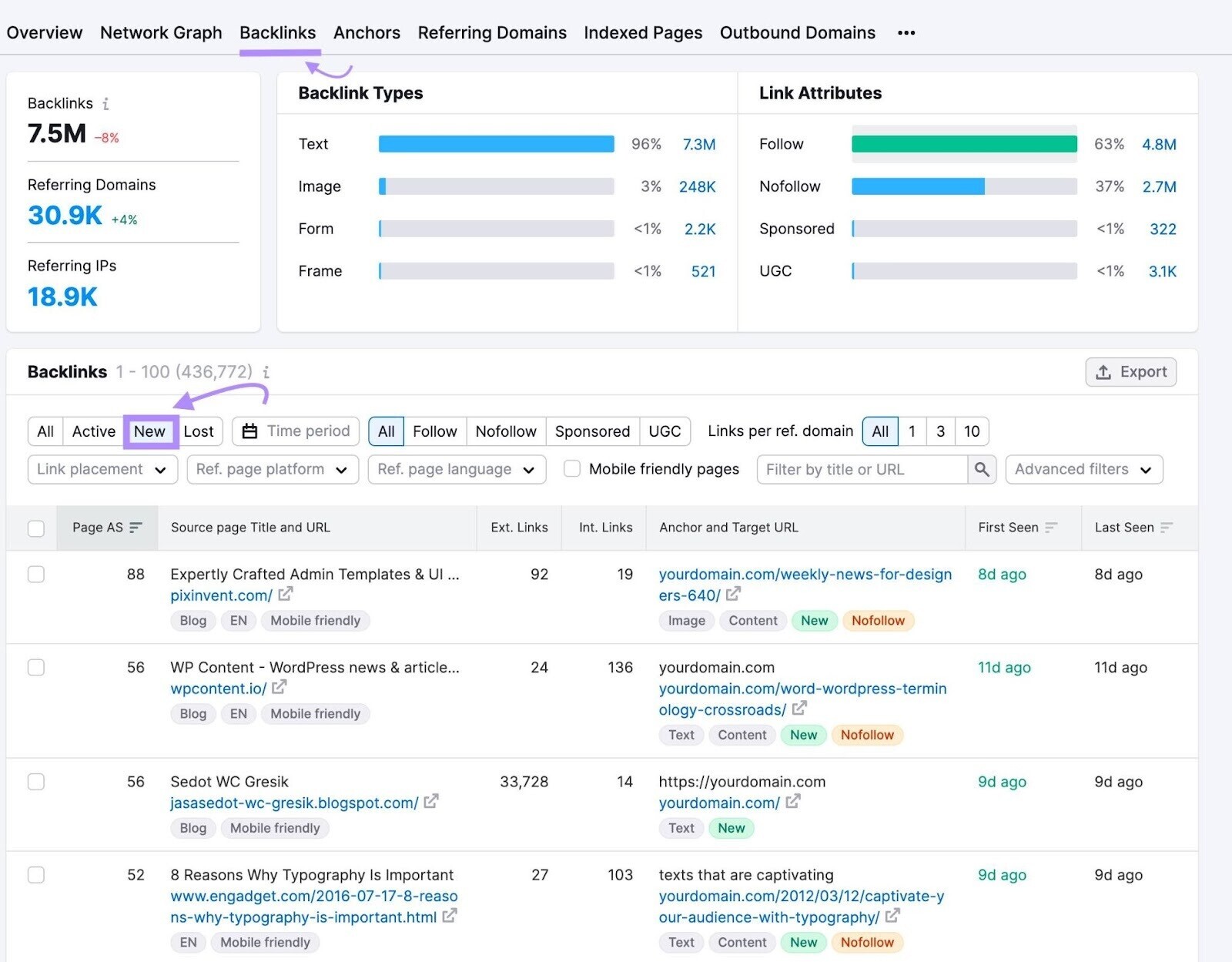
From the top menu of the backlinks report, select “New” to see all of your most recently acquired backlinks. You can use this to compare to your pitches and see which have successfully landed a link.
Sometimes, a site may publish your quote without citing you or linking back to your website.
With Semrush’s Brand Monitoring app, you can see when your website has been mentioned but not linked to.
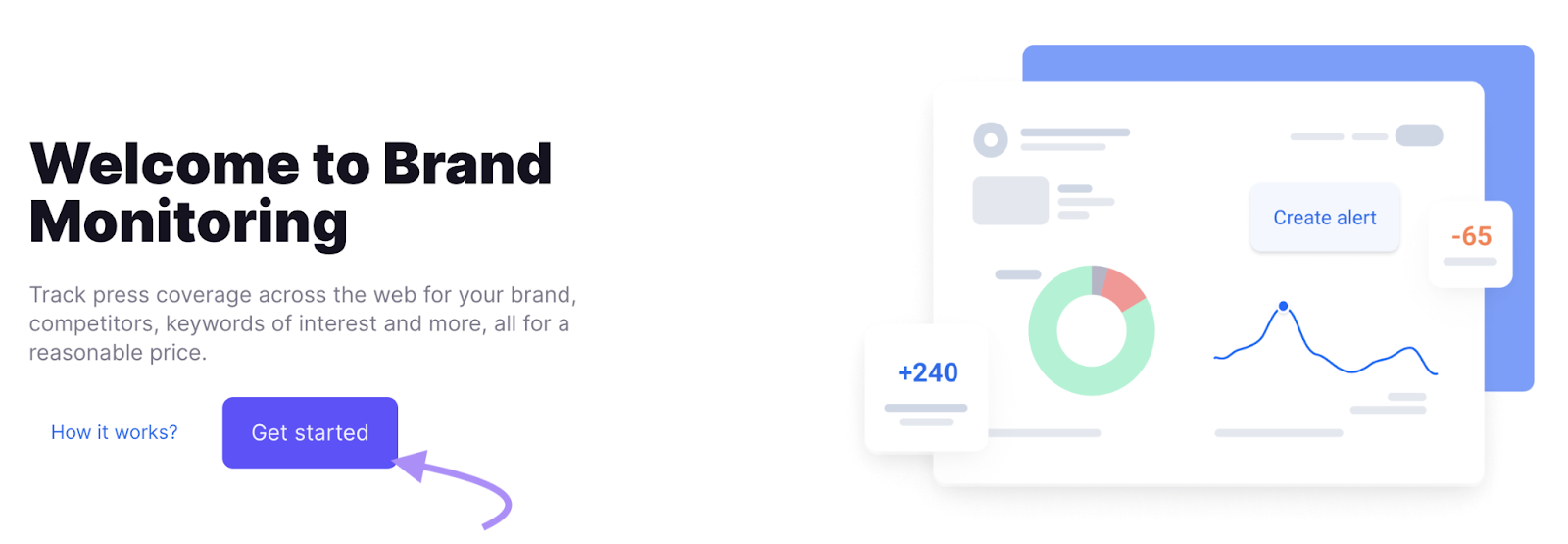
Start by heading over to the app and hitting “Get started.” This will bring up monitoring options to choose from. If you want to track mentions for your company, you are best selecting “Brand.” However, if you are an individual expert, you will be better off selecting “Person.”
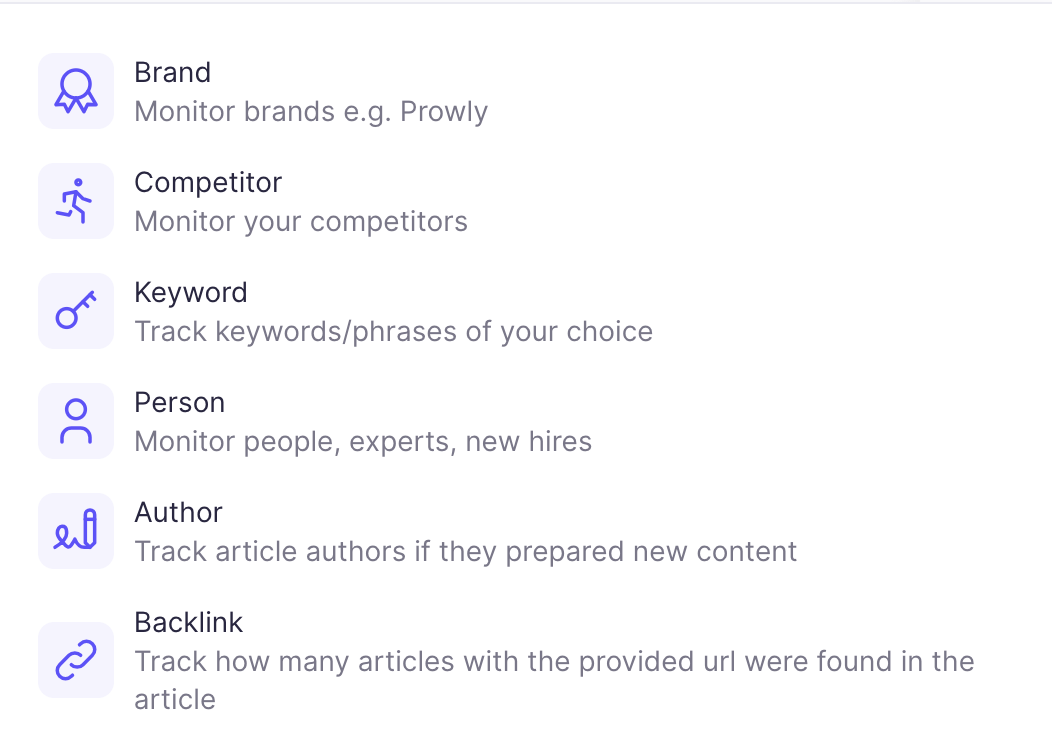
Add all the relevant information including your company or expert’s name, keywords, and the countries to monitor and hit “Create query.” This will instantly show your results.
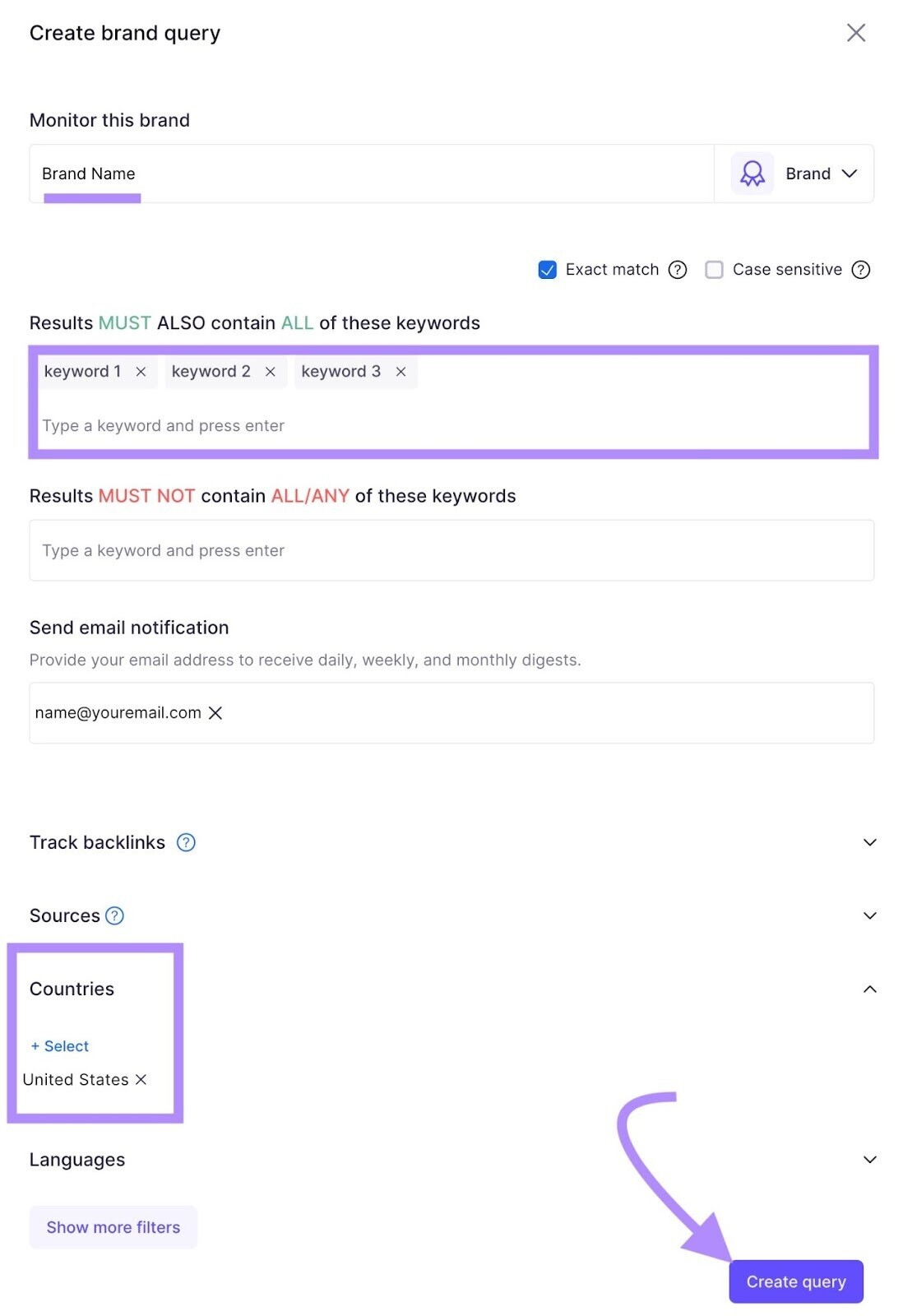
In this case where your brand has been mentioned but not linked to, you can reach out to the website and ask that they link to you.
Don’t make it too obvious that you’re simply trying to get a link. Add value with your request. For example, ask that they link to your site so that if any of their readers want to reach out to you for further information, they can easily find you.
5 HARO Alternatives to Boost Your Link Building Efforts
Help a Reporter Out is probably the best known pitching platform out there. However, that comes with its challenges.
One of which is oversaturation and fake pitches. Which is why some publications and websites have moved to alternative platforms.
The good news?
We also have the inside scoop on the most popular HARO alternatives.
By using these platforms in combination with HARO, you can take your link building game to the next level.
1. Qwoted
Qwoted is a US-based pitching platform that connects industry experts, PR professionals, and journalists all in one place.
The platform is used by some of the most high-authority publications in the U.S., including Forbes, Newsweek, Business Insider, Fox Business, Fox News, HuffPost, and more.
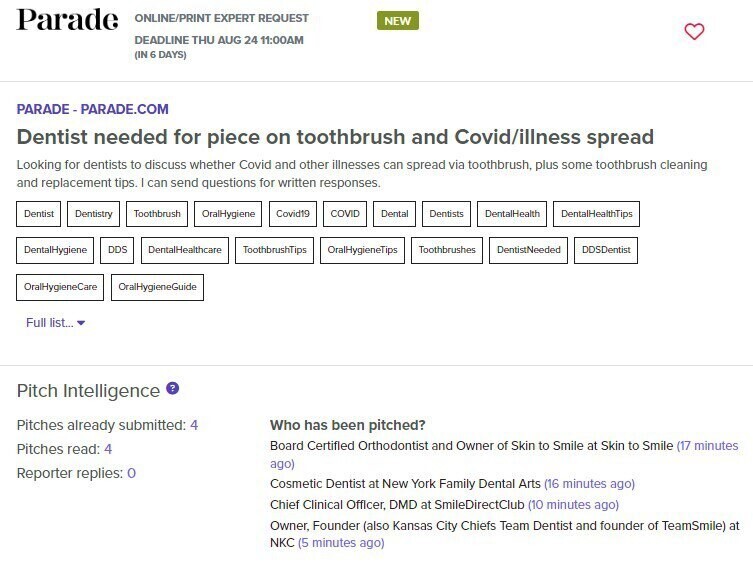
Qwoted is a powerful platform that offers both free and paid accounts. You can either register as an independent expert or as a company and list multiple team members as experts.
Moreover, once registered, you will be featured on the expert database.
Meaning?
Journalists can reach out to you directly as a relevant source. So you spend less time pitching and competing for journalists’ attention.
Some of the top features we like most about Qwoted are:
- Free and paid plans are available
- Strict vetting process on every account to ensure experts are genuine and no fake personas slip through the cracks
- See who has already pitched each opportunity to assess your chances of being successful
- Reporters indicate whether they have enough pitches so you don’t waste time responding to a query that’s already filled
- You’re notified when a reporter reads your pitch
- You can add representatives to pitch on your behalf
- Exceptional support team
2. Featured (Formally Terkel)
Featured (Formally Terkel) is another U.S.-based pitching platform. It directly connects experts and thought leaders with journalists from some of the world’s most high-authority websites, including SHRM, GoDaddy, Fast Company, Business Insider, and Zapier.
With Featured, you can set up a detailed profile mentioning your expertise. The platform will recommend relevant opportunities to pitch. You can then send pitches to the journalist directly inside the platform.
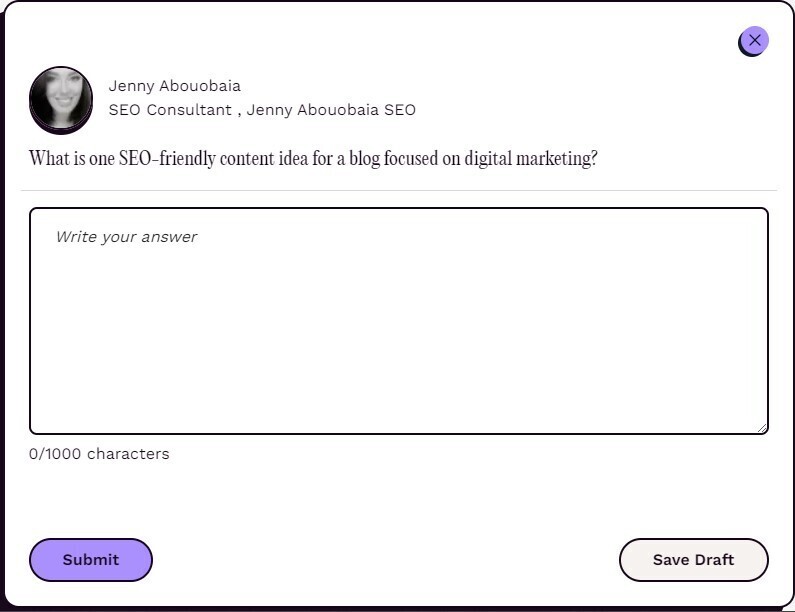
The top features we like about Featured are:
- Free and paid plans are available
- Get opportunities tailored to your experience and expertise
- As more of your pitches get published, the Featured algorithm works better for your profile, bringing you more qualified opportunities
- The “track your answers” feature allows you to see when journalists have read your pitches and if they intend to use them in your article
- Featured perks include a “done-for-you” link building service that allows you to have a professional ghostwriter answer queries on your behalf.
3. PressPlugs
PressPlugs is a U.K.-based platform that connects expert sources with some of the U.K.’s biggest media outlets, including Metro, The Daily Mail, BBC News, The Guardian, and The Telegraph.
PressPlugs works similarly to Qwoted and gives you direct access to the journalists. Meaning you can reach out directly and build relationships with journos long-term.
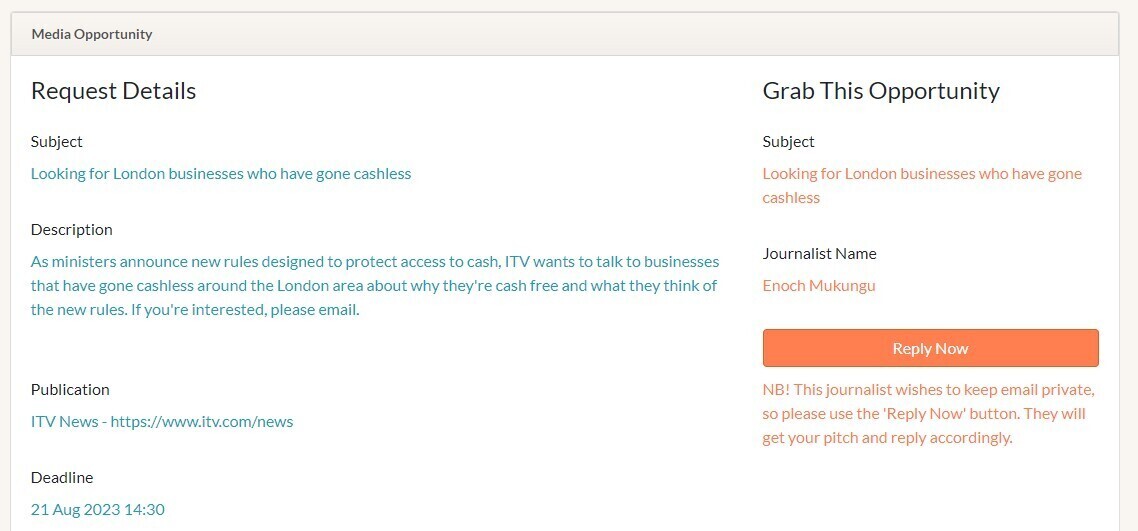
Unfortunately, there is no free account option with PressPlugs.
The top features we like about PressPlugs are:
- A great alternative to HARO for U.K.-based companies (with some international queries)
- Good search functionality to quickly find relevant queries
- Excellent for companies looking to improve local SEO with many geo-specific queries
4. SourceBottle
SourceBottle is an Australian-based pitching platform that works similarly to Help a Reporter Out.
The opportunities are mainly for Australian media, including Financial Review, ABC Australia, and The Guardian.
You receive daily emails with relevant opportunities at a time that suits you best (which you choose during signup).
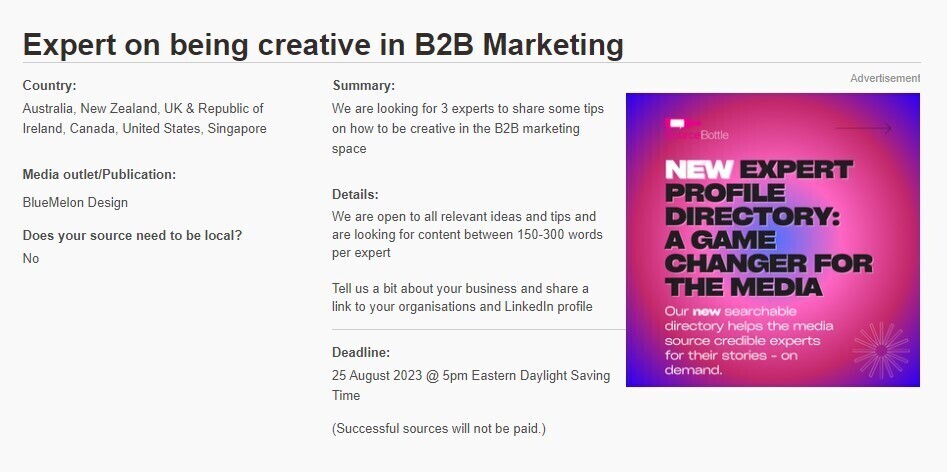
The top features we like about SourceBottle are:
- There are both free and paid accounts available
- A great alternative to HARO for Australian-based companies that want geo-specific opportunities
- You can temporarily turn off query emails if you need a break (such as when you are on vacation)
5. Help a B2B Writer
Help a B2B Writer connects experts with professional writers who write for B2B companies, including Shopify and Content Marketing Institute.
Similarly to HARO, Help a B2B Writer sends opportunities directly to your inbox. However, opportunities are sent once daily, and you will only receive queries for the industries you sign up for when setting up your profile.
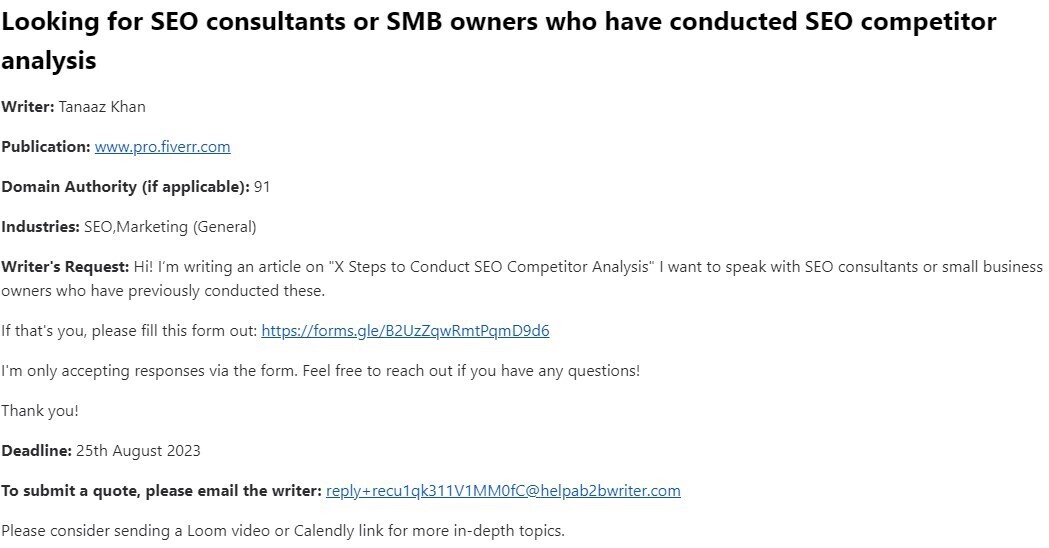
The features we like most about Help a B2B Writer are:
- 100% free for sources
- Get daily emails with opportunities tailored to your experience and expertise
- Direct contact with journalists to build long-term relationships
- Opportunities from big-name brands not featured on other platforms
Take Your Link Building Efforts to The Next Level
HARO link building is one of the best ways to build high-quality backlinks.
By using HARO and alternatives as part of your SEO strategy, you can outdo your competition with links they can’t easily replicate.
To learn more about how to take your link building to new heights, check out our link building strategies guide.
And try the Link Building Tool today:
Source link : Semrush.com


